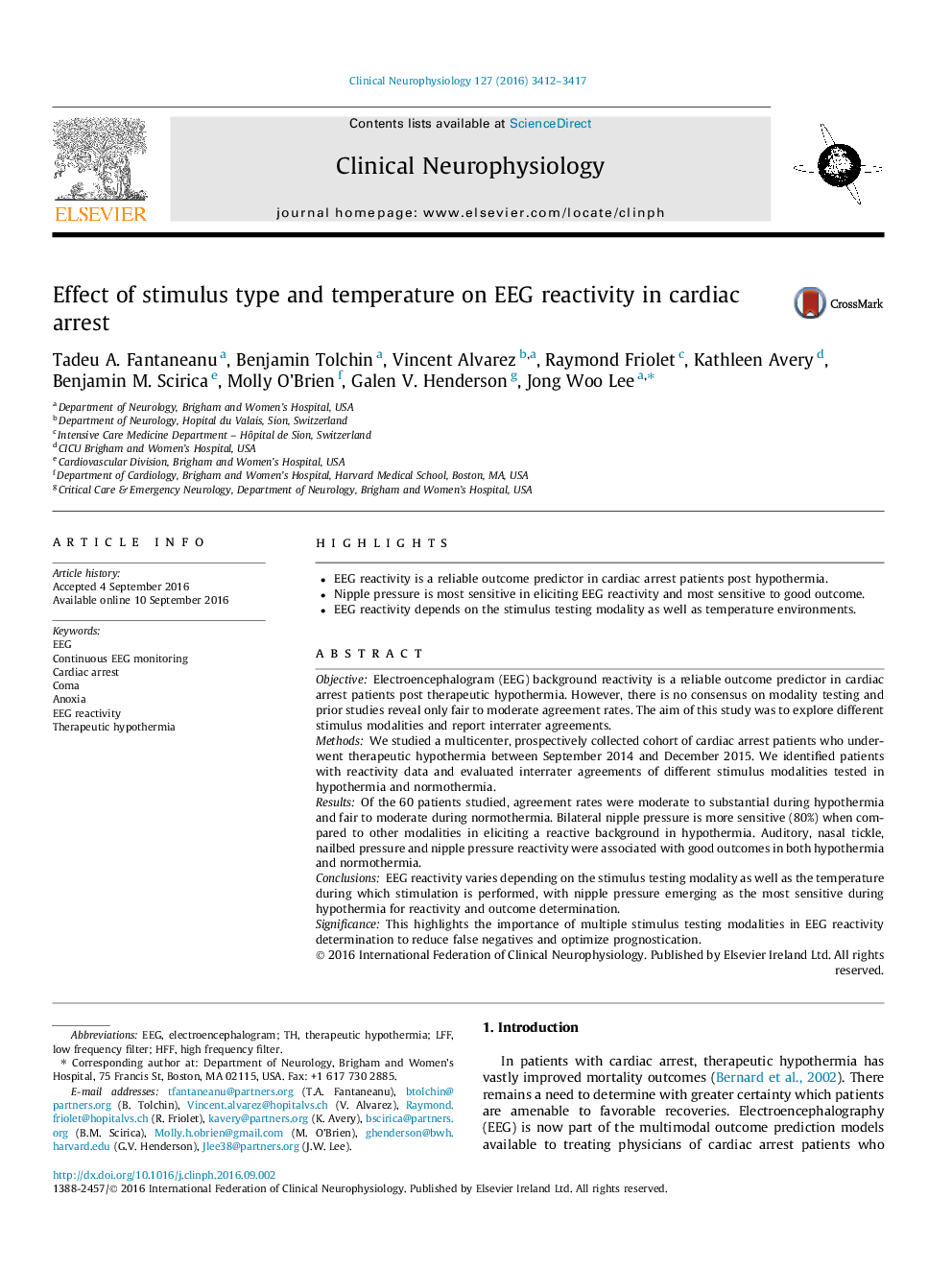| Article ID | Journal | Published Year | Pages | File Type |
|---|---|---|---|---|
| 5627572 | Clinical Neurophysiology | 2016 | 6 Pages |
â¢EEG reactivity is a reliable outcome predictor in cardiac arrest patients post hypothermia.â¢Nipple pressure is most sensitive in eliciting EEG reactivity and most sensitive to good outcome.â¢EEG reactivity depends on the stimulus testing modality as well as temperature environments.
ObjectiveElectroencephalogram (EEG) background reactivity is a reliable outcome predictor in cardiac arrest patients post therapeutic hypothermia. However, there is no consensus on modality testing and prior studies reveal only fair to moderate agreement rates. The aim of this study was to explore different stimulus modalities and report interrater agreements.MethodsWe studied a multicenter, prospectively collected cohort of cardiac arrest patients who underwent therapeutic hypothermia between September 2014 and December 2015. We identified patients with reactivity data and evaluated interrater agreements of different stimulus modalities tested in hypothermia and normothermia.ResultsOf the 60 patients studied, agreement rates were moderate to substantial during hypothermia and fair to moderate during normothermia. Bilateral nipple pressure is more sensitive (80%) when compared to other modalities in eliciting a reactive background in hypothermia. Auditory, nasal tickle, nailbed pressure and nipple pressure reactivity were associated with good outcomes in both hypothermia and normothermia.ConclusionsEEG reactivity varies depending on the stimulus testing modality as well as the temperature during which stimulation is performed, with nipple pressure emerging as the most sensitive during hypothermia for reactivity and outcome determination.SignificanceThis highlights the importance of multiple stimulus testing modalities in EEG reactivity determination to reduce false negatives and optimize prognostication.
